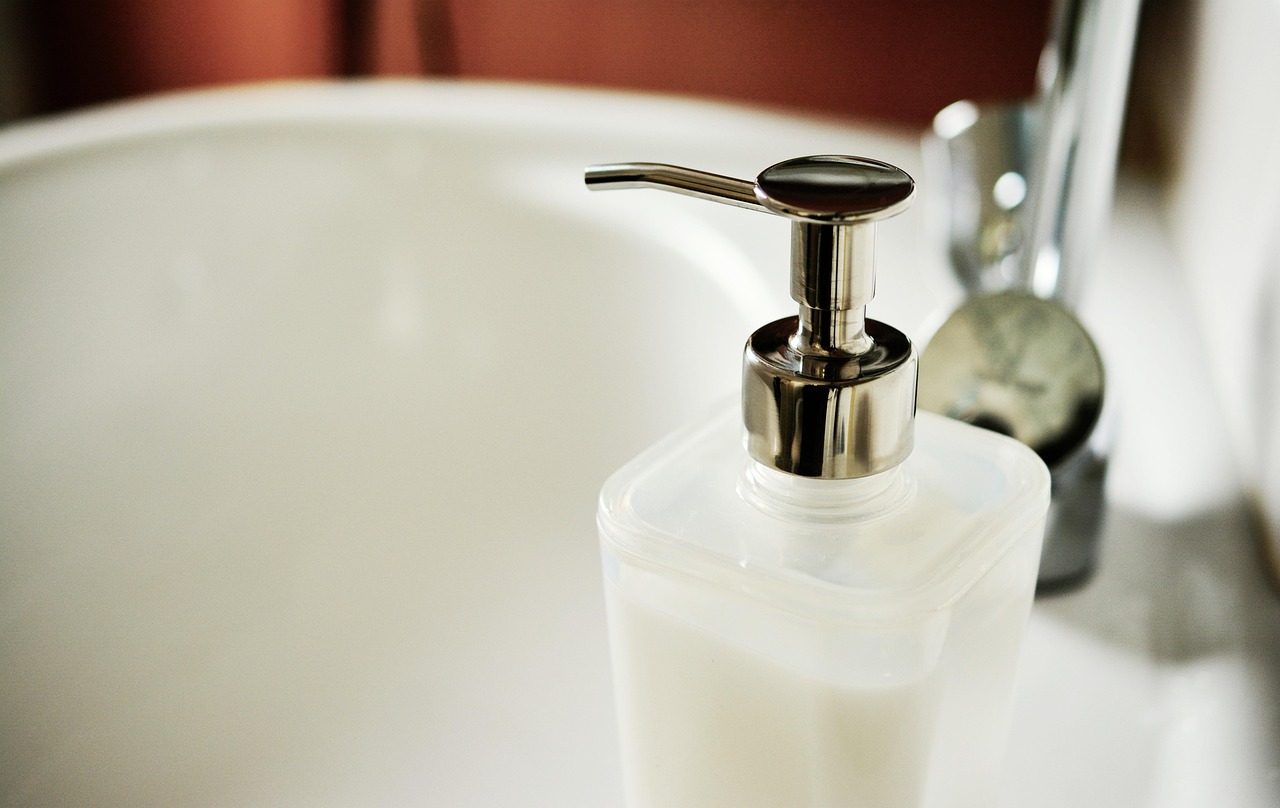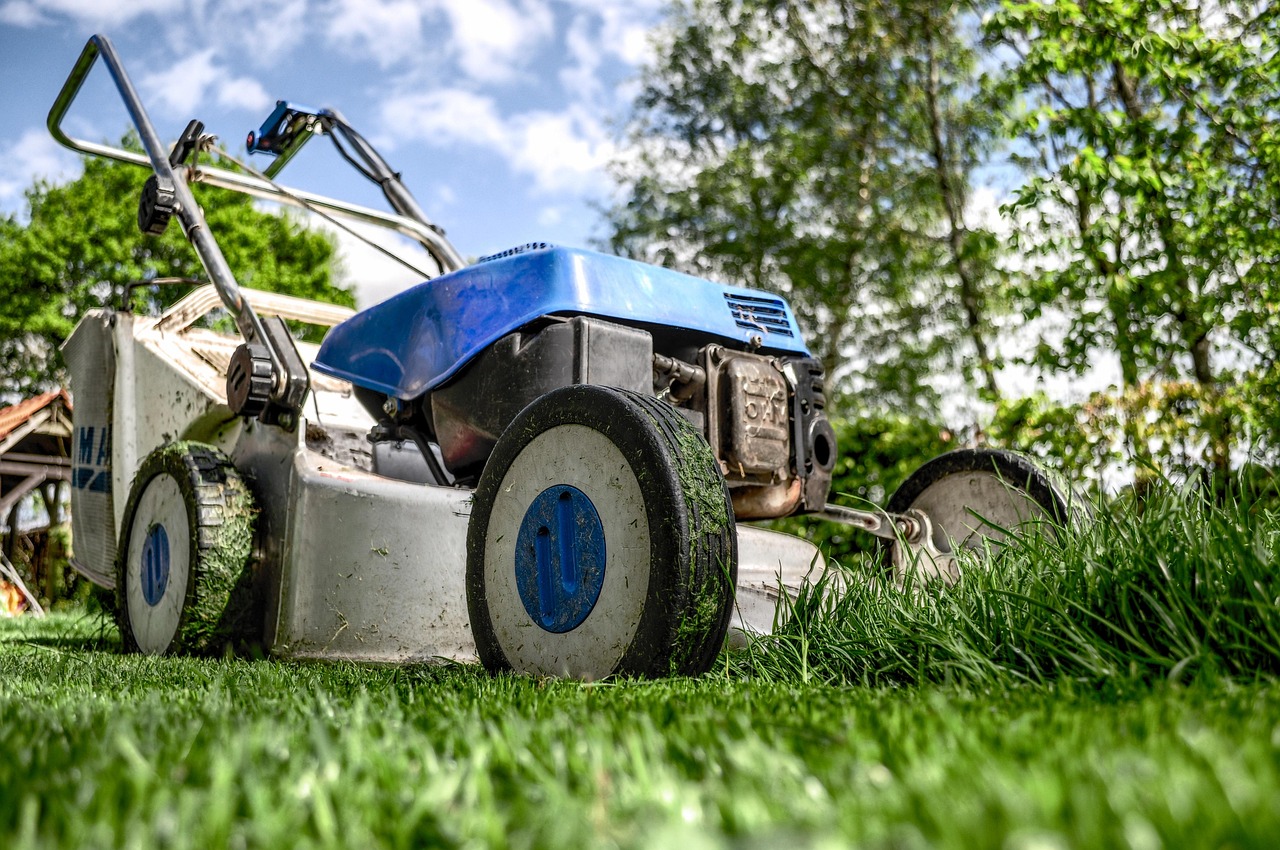To maintain the longevity and performance of your tools, clean them after tree pruning by removing debris, disinfecting with a suitable solution, and drying thoroughly. This process prevents the spread of diseases and enhances the efficiency of your equipment.
Tree pruning is an essential part of maintaining healthy trees. It encourages growth, removes dead branches, and improves the overall appearance of your landscape. However, the tools used during this process can become contaminated with sap, dirt, and pathogens. Proper cleaning of these tools is crucial to ensure their longevity and prevent the spread of diseases among plants.

Using clean tools is not just about maintaining their functionality; it also plays a significant role in the health of your garden or yard. Infected tools can transfer diseases from one plant to another, potentially harming healthy specimens. Thus, establishing a regular cleaning routine after each pruning session is a best practice that every gardener should adopt.
Importance of Cleaning Tools
Cleaning pruning tools serves several purposes. Here are some key reasons why it is vital:
- Prevention of Disease Spread: Dirty tools can carry pathogens that lead to diseases in plants.
- Maintaining Tool Efficiency: Residue can affect the performance of tools, making them less effective.
- Extending Tool Life: Regular maintenance helps prevent rust and corrosion.
- Safety: Clean tools reduce the risk of accidents caused by sticky residues or malfunctions.
In addition to these benefits, cleaning your tools can also enhance your overall pruning experience. When your equipment is in good condition, you will find it easier and more enjoyable to work in your garden.

Essential Cleaning Tools and Supplies
Before you start cleaning your pruning tools, gather the necessary supplies. Here are some items you will need:
- Water
- Soap or detergent
- Disinfectant (such as bleach or alcohol-based solutions)
- Scrub brush or cloth
- Towel for drying
- Protective gloves
Having these supplies on hand will ensure that you can effectively clean your tools after each use. It is also advisable to have a designated area for cleaning to keep your workspace organized.
Steps for Cleaning Pruning Tools
The following steps outline a comprehensive method for cleaning your pruning tools effectively:

- Remove Debris: Start by removing any large pieces of dirt, wood chips, or sap using a scrub brush or cloth.
- Wash with Soap: Fill a bucket with warm water and add a few drops of dish soap. Submerge the tools and scrub them with a brush to remove remaining dirt.
- Rinse Thoroughly: Rinse each tool under running water to wash away soap and debris. Ensure that no soap residue remains.
- Disinfect: Prepare a disinfectant solution. A common mixture is 1 part bleach to 9 parts water. Soak the tools for a few minutes to eliminate pathogens.
- Rinse Again: After disinfecting, rinse the tools under running water to remove any disinfectant residue.
- Dry Completely: Use a towel to dry the tools thoroughly before storing them. This step helps prevent rust formation.
Following these steps will ensure that your pruning tools are cleaned properly and ready for future use. Additionally, it helps maintain a healthy environment for your plants by preventing disease transmission.
Additional Care Tips for Pruning Tools
Beyond regular cleaning, here are some additional care tips to keep your pruning tools in top condition:
- Sharpen Blades: Regularly sharpen blades to ensure clean cuts. Dull blades can damage plants.
- Lubricate Moving Parts: Apply oil to pivot points and moving parts to keep tools functioning smoothly.
- Avoid Moisture: Store tools in a dry place to avoid rust and corrosion.
By implementing these care tips alongside proper cleaning practices, you will extend the life of your pruning tools and contribute positively to your gardening efforts. Taking care of your equipment is just as important as taking care of your plants.
Common Tools Used for Tree Pruning
Understanding the different types of tools used for tree pruning is essential for effective cleaning and maintenance. Each tool has specific functions and requires particular care. Here are some common tools used in tree pruning:

- Hand Pruners: Ideal for trimming small branches and soft growth.
- Loppers: Designed for cutting larger branches that hand pruners cannot handle.
- Pruning Saws: Useful for cutting thick branches. They often have a curved blade for better efficiency.
- Hedge Shears: Best for shaping hedges and bushes.
- Chainsaws: Used for more extensive pruning tasks, especially for larger trees.
Each of these tools has unique features that facilitate their specific tasks. Knowing how to clean and maintain each type will enhance their performance and longevity.
Cleaning Specific Tools: Techniques and Precautions
Different pruning tools require varying cleaning techniques. Here is how to clean some of the most common tools:
Hand Pruners and Loppers
These tools often accumulate sap and dirt. To clean them, follow these steps:
- Disassemble: If possible, disassemble the tool to access all parts.
- Wash: Use warm soapy water to scrub the blades and handles. A toothbrush can help reach tight spots.
- Disinfect: After washing, soak the blades in a disinfectant solution to kill any remaining pathogens.
- Dry: Thoroughly dry the tool using a towel. Ensure no moisture remains, especially in joints.
Pruning Saws
Cleaning pruning saws requires careful attention due to their sharp blades:
- Remove Debris: Brush off any debris from the blade carefully.
- Wash: Soak the blade in soapy water, using a cloth to clean it gently.
- Disinfect: Apply a disinfectant solution to the blade, ensuring it contacts all surfaces.
- Dry Completely: Use a towel to dry the blade thoroughly. Store the saw with a blade guard to prevent accidents.
Chainsaws
Chainsaws require extra care due to their complexity and safety features:
- Remove the Chain: Safely remove the chain from the saw before cleaning.
- Clean the Bar and Chain: Use a brush to remove debris from both the bar and chain. Pay attention to the grooves.
- Wash with Soap: Clean with warm soapy water and a cloth, ensuring all parts are free of residue.
- Lubricate: After drying, apply chain oil to keep the chain functioning smoothly.
The Role of Disinfectants in Cleaning Tools
The use of disinfectants is crucial in maintaining healthy plants. They help eliminate pathogens that can cause diseases in trees and shrubs. Here are some commonly used disinfectants:
| Disinfectant | Concentration | Usage Tips |
|---|---|---|
| Bleach Solution | 1 part bleach to 9 parts water | Soak tools for at least 10 minutes; rinse thoroughly afterward. |
| Isopropyl Alcohol | 70% concentration | Spray on tools; let sit for 5-10 minutes before wiping off. |
| Pine Oil Cleaner | N/A | Mild disinfectant; follow manufacturer’s instructions for dilution. |
Selecting the right disinfectant is important. Always follow safety guidelines when handling chemicals. Wear gloves and work in a well-ventilated area to minimize exposure.
Frequency of Tool Cleaning
The frequency of cleaning your tools depends on how often you use them and the types of plants you are working with. Here are some guidelines:
- After Each Use: Clean tools that have been used on diseased or infected plants immediately after use.
- Weekly Maintenance: For tools used frequently in healthy conditions, perform a quick clean weekly to remove minor debris.
- Seasonal Deep Cleaning: At the end of each pruning season, conduct a thorough cleaning and inspection of all tools.
This routine ensures that your tools remain effective and safe for use, contributing to a healthier gardening environment. Regular maintenance helps prevent issues that arise from neglecting tool care, such as rust or diminished performance during critical pruning periods.
Storage Practices for Pruning Tools
The way you store your pruning tools can greatly affect their lifespan. Proper storage practices help prevent damage and corrosion. Here are some tips for storing your tools effectively:
- Avoid Damp Areas: Store tools in a dry environment to prevent rusting.
- Use Tool Racks: Hang tools on racks or hooks to keep them organized and off the ground.
- Covers or Cases: Use protective covers for sharp blades to prevent accidents and damage.
Caring for your pruning tools through proper storage not only extends their life but also ensures they are ready when needed. Following these practices will help you maintain an efficient gardening routine.
Signs Your Pruning Tools Need Maintenance
Even with regular cleaning and proper storage, pruning tools can wear down over time. Recognizing the signs that your tools need maintenance is essential for effective gardening. Here are some indicators that your pruning tools may require attention:
- Dull Blades: If you notice that cuts are jagged rather than clean, it’s time to sharpen your blades.
- Rust or Corrosion: Visible rust spots on metal surfaces indicate that moisture has compromised the tool’s integrity.
- Difficulty in Operation: If your tools feel stiff or difficult to operate, it may be due to lack of lubrication.
- Loose Parts: Check for any loose screws or bolts that could affect the performance of the tool.
Addressing these issues promptly can prolong the life of your tools and improve their efficiency during pruning tasks. Regular inspections will help you stay ahead of potential problems.
Sharpening Techniques for Pruning Tools
Keeping your pruning tools sharp is vital for making clean cuts and promoting healthy plant growth. Dull tools can cause damage to plants and make the pruning process more difficult. Here are some effective sharpening techniques:
Using a Sharpening Stone
A sharpening stone is a popular choice for maintaining sharp blades. Follow these steps:
- Choose the Right Grit: Use a coarse grit for significant dullness and a fine grit for touch-ups.
- Clean the Blade: Ensure the blade is clean and free from debris before sharpening.
- Angle the Blade: Hold the blade at a 20-degree angle against the stone.
- Sharpen: Move the blade across the stone in a smooth motion, applying even pressure.
- Check Sharpness: Test the blade by cutting through a piece of paper. If it cuts easily, it is sharp enough.
Using a File
A file can also be an effective tool for sharpening blades. Here’s how to use it:
- Select the Right File: Use a flat file for straight blades and a round file for curved blades.
- Clean the Blade: Wipe the blade clean before starting the sharpening process.
- File at the Right Angle: Maintain a consistent angle, typically around 20 degrees, while filing.
- Work in One Direction: Always file in one direction to achieve a sharper edge.
- Inspect Regularly: Check the sharpness as you file to avoid over-sharpening.
Disinfecting Your Tools: Best Practices
Disinfecting your pruning tools is just as important as cleaning them. This process helps prevent the spread of diseases from one plant to another. Follow these best practices for effective disinfection:
- Choose an Appropriate Disinfectant: Use a disinfectant suitable for gardening tools, such as bleach or alcohol solutions.
- Prepare the Solution: Dilute bleach in water (1 part bleach to 9 parts water) or use 70% isopropyl alcohol.
- Soak or Spray: Either soak small hand tools in the solution or spray larger tools thoroughly.
- Allow Contact Time: Let the disinfectant sit on the tool’s surface for at least 5-10 minutes to ensure effectiveness.
- Rinse and Dry: Rinse off all disinfectant residue with clean water and dry completely before storage.
Environmental Considerations When Cleaning Tools
Caring for your pruning tools also involves being mindful of the environment. Here are some eco-friendly practices to consider when cleaning and maintaining your tools:
- Use Natural Cleaners: Instead of chemical-based cleaners, opt for natural alternatives like vinegar or baking soda.
- Avoid Excess Water Use: Use only as much water as necessary when cleaning tools to conserve resources.
- Dispose of Chemicals Properly: If using chemical disinfectants, ensure you dispose of any leftover solutions responsibly according to local regulations.
- Compost Organic Debris: After cleaning, compost any organic material removed from your tools instead of throwing it away.
The awareness of ecological impact while maintaining your gardening tools can contribute to a healthier environment overall. By adopting sustainable practices, you ensure that your gardening activities support rather than harm nature.
The Benefits of Using Quality Tools
Investing in high-quality pruning tools can significantly enhance your gardening experience. Here are some benefits associated with using quality tools:
- Durability: Quality tools are made from superior materials that withstand wear and tear, leading to longer lifespans.
- Easier Maintenance: Well-designed tools often require less frequent maintenance than lower-quality alternatives.
- Better Performance: High-quality tools perform more efficiently, making pruning tasks easier and more effective.
- Safety Features: Many quality tools come equipped with safety features that help prevent accidents during use.
The initial investment in quality pruning tools can result in cost savings over time due to their longevity and performance. Choosing wisely will make your gardening tasks more enjoyable and efficient.
Maintaining Your Tools for Seasonal Changes
Seasonal changes can impact the maintenance needs of your pruning tools. As the weather shifts, so too do the conditions that affect the longevity and performance of your equipment. Here are some considerations for maintaining your tools throughout the seasons:
Spring Maintenance
Spring is typically the beginning of the pruning season. This is when trees and shrubs start to grow after winter dormancy. Before you begin your pruning tasks, ensure that your tools are ready:
- Inspect for Damage: Check for any signs of wear or damage from previous seasons.
- Sharpen Blades: Ensure that all cutting edges are sharp to promote healthy cuts.
- Lubricate Tools: Apply lubrication to moving parts to ensure smooth operation.
Summer Maintenance
During the summer, tools may become dirty more quickly due to sap and plant juices. Maintenance during this time should focus on cleanliness:
- Frequent Cleaning: Clean tools after each use to prevent residue buildup.
- Regular Disinfection: Keep disinfectant solutions handy to maintain plant health.
- Check for Rust: Monitor tools regularly for signs of rust and address immediately.
Fall Maintenance
As fall approaches and the pruning season winds down, it’s important to prepare your tools for winter:
- Thorough Cleaning: Perform a deep clean to remove any dirt, sap, or debris collected during the season.
- Sharpen and Repair: Take the time to sharpen blades and make any necessary repairs.
- Store Properly: Follow best storage practices to protect tools from moisture and cold temperatures.
Winter Maintenance
In winter, tools may not see much use, but they still require attention:
- Inspect Storage Conditions: Ensure tools are stored in a dry area to prevent corrosion.
- Routine Checks: Regularly check for rust or damage, even during the off-season.
By aligning your tool maintenance with seasonal changes, you ensure that your equipment remains in top condition year-round, ready for use when the time comes.
Educating Others on Tool Maintenance
An often-overlooked aspect of gardening is sharing knowledge about tool maintenance with fellow gardeners. Educating others can lead to a more community-oriented approach to gardening. Consider these methods for sharing information:
- Workshops: Organize local workshops or demonstrations on tool cleaning and maintenance practices.
- Online Resources: Create or share online guides and videos that illustrate best practices for tool care.
- Community Gardens: Collaborate with community gardens to establish shared standards for tool maintenance.
By fostering a community of knowledge-sharing, you help ensure that all gardeners can benefit from effective practices, leading to healthier gardens overall.
Final Thoughts
Cleaning and maintaining your pruning tools is a vital practice that enhances both your gardening experience and the health of your plants. By regularly cleaning tools, using proper disinfectants, and storing them correctly, you extend their lifespans and improve their performance. Investing in high-quality tools further amplifies these benefits, making your gardening tasks easier and safer.
The importance of adapting maintenance practices to seasonal changes cannot be overstated. Understanding when and how to care for your tools ensures they are always ready for use. Additionally, sharing this knowledge with others in your gardening community enriches everyone’s experience and promotes better care for plants everywhere.
Ultimately, taking the time to care for your pruning tools reflects a commitment to your gardening endeavors. Whether you are a novice gardener or an experienced horticulturist, these best practices will serve as a foundation for creating a thriving garden environment. By prioritizing tool maintenance, you contribute positively not only to your own garden but also to the broader ecosystem.
